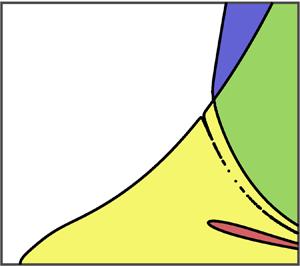Article contents
Stability of falling liquid films on flexible substrates
Published online by Cambridge University Press: 13 August 2020
Abstract

The linear stability of a liquid film falling down an inclined flexible plane under the influence of gravity is investigated using analytical and computational techniques. A general model for the flexible substrate is used leading to a modified Orr–Sommerfeld problem addressed numerically using a Chebyshev tau decomposition. Asymptotic limits of long waves and small Reynolds numbers are addressed analytically and linked to the computations. For long waves, the flexibility has a destabilising effect, where the critical Reynolds number decreases with decreasing stiffness, even destabilising Stokes flow for sufficiently small stiffness. To pursue this further, a Stokes flow approximation was considered, which confirmed the long-wave results, but also revealed a short wave instability not captured by the long-wave expansions. Increasing the surface tension has little effect on these instabilities and so they were characterised as wall modes. Wider exploration revealed mode switching in the dispersion relation, with the wall and surface mode swapping characteristics for higher wavenumbers. The zero-Reynolds-number results demonstrate that the long-wave limit is not sufficient to determine instabilities so the numerical solution for arbitrary wavenumbers was sought. A Chebyshev tau spectral method was implemented and verified against analytical solutions. Short wave wall instabilities persist at larger Reynolds numbers and destabilisation of all Reynolds numbers is achievable by increasing the wall flexibility, however increasing the stiffness reverts back to the rigid wall limit. An energy decomposition analysis is presented and used to identify the salient instability mechanisms and link them to their physical origin.
JFM classification
Information
- Type
- JFM Papers
- Information
- Copyright
- © The Author(s), 2020. Published by Cambridge University Press
References
REFERENCES
- 13
- Cited by

